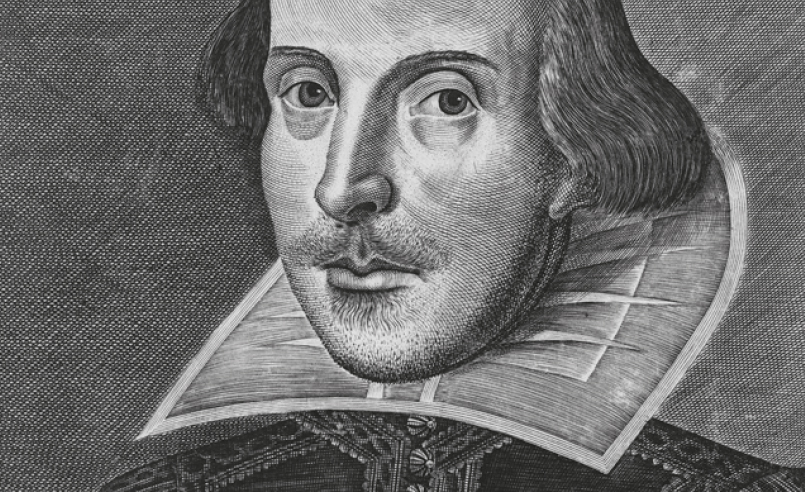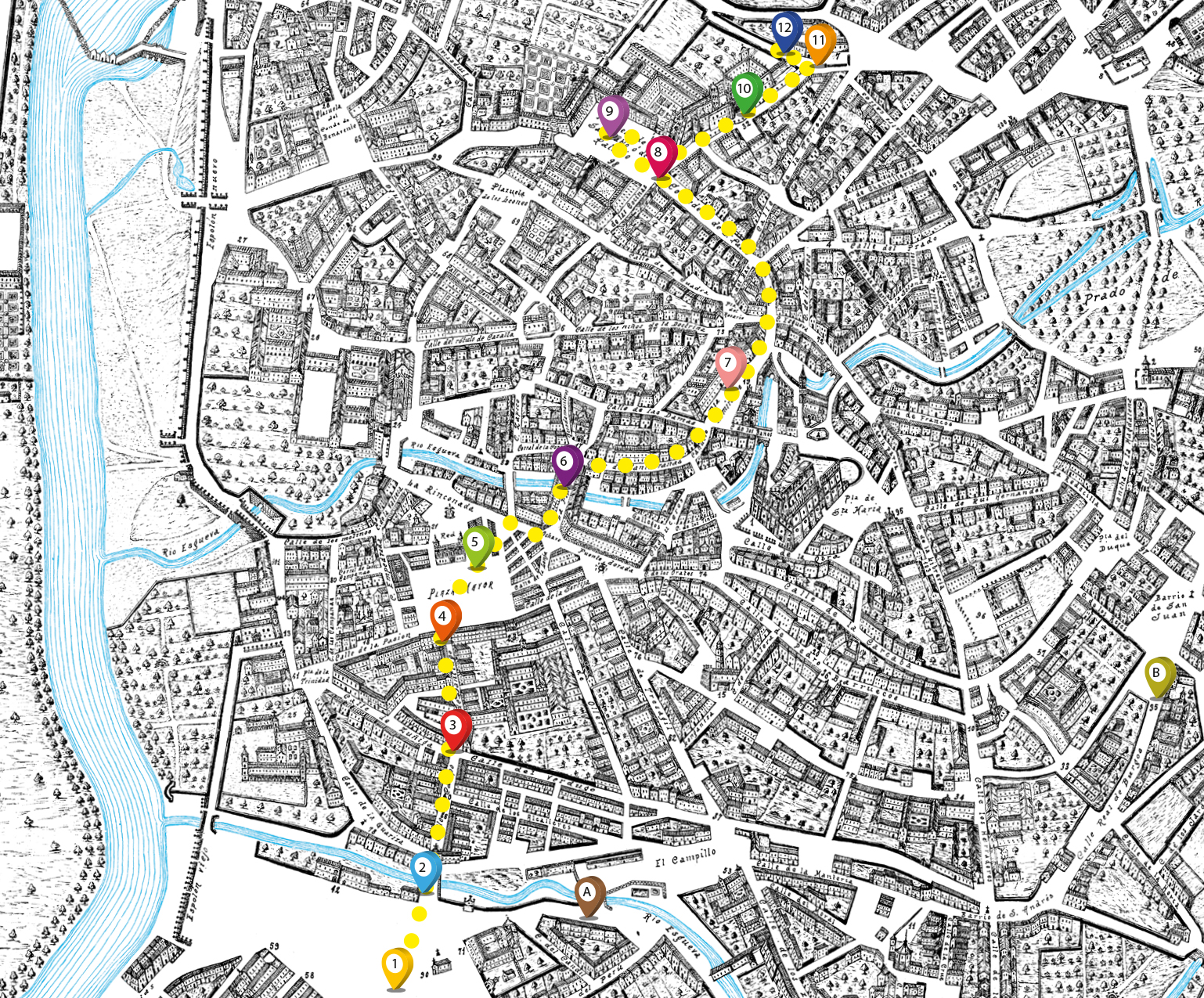
The Route of the English Ambassador:
From Cervantes to Shakespeare
Enjoy this flashback into history!
In 1605 Valladolid, then capital of Spain hosted an English embassy sent by James I of England (VI of Scotland) to ratify the Treaty of London (1604) in the presence of Philip III and his court, bringing to an end twenty years of war.
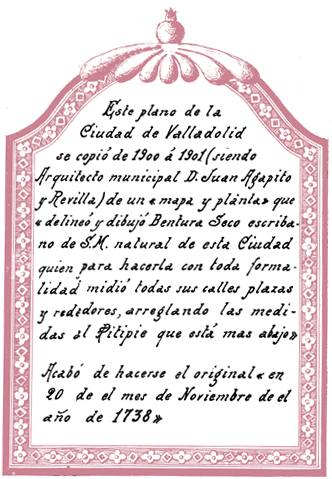 Using this old map of Valladolid we can retrace the ceremonial entry into the city and visit the sites where the most important public and private entertainments were held to commemorate the peacemaking.
Using this old map of Valladolid we can retrace the ceremonial entry into the city and visit the sites where the most important public and private entertainments were held to commemorate the peacemaking.
A project by Berta Cano Echevarría & Mark Hutchings
1. Acera de Recoletos – The Ambassador’s entry
2. Plaza de Zorrilla – Cervantes in 1605
3. Calle Zúñiga – The Ambassador and the route
4. Calle Santiago – The tournament and bullfight
5. Plaza Mayor – Don Quixote in the plaza
6. Calle Platerías – The court at Valladolid
7. Calle Angustias – Catholics and protestants
8. Palacio Pimentel – The Holy Spirit procession
9. Plaza de San Pablo – The baptism of the Prince
10. Colegio de San Gregorio – The false door
11. Casa del Sol – The count of Gondomar and his library
12. San Benito el Viejo – Cervantes and Shakespeare
A. Casa de Cervantes
B. Colegio de los Ingleses
01 – The Ambassador’s entry
«On Thursday the 26th of May, the Lord Admiral of England arrived outside the city and the Constable came out to greet him. A multitude of people had come out of the city gate to watch the entry, some in coaches, some on horseback, and some on foot […] It happened that having arrived at the point where the Lord Admiral was waiting and having exchanged greetings, the sky filled with black clouds: even though the day had been sunny and clear until then, it rained so heavily that everyone got wetter than they would have wanted.” (Cabrera de Córdoba)
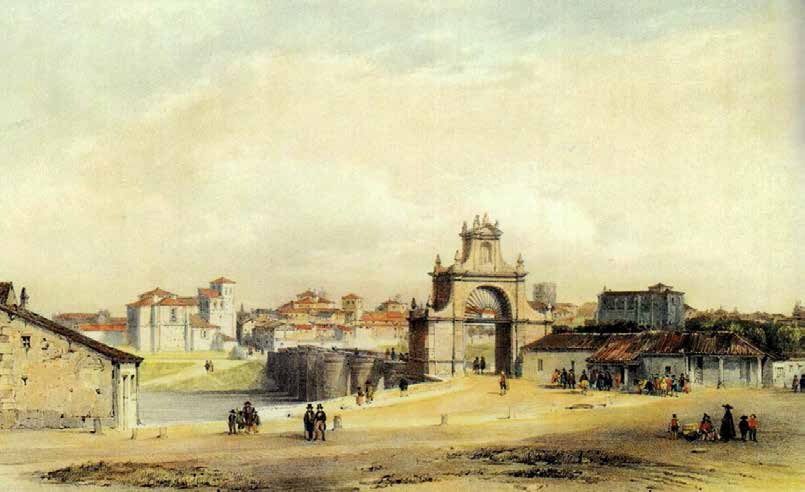
02 – Cervantes in 1605
Only months before the arrival of the English ambassador the first part of Don Quixote was published. Cervantes lived in the city and must have witnessed these events. Indeed, the last couplet of a sonnet by Góngora, “These deeds were commissioned to be written / by Don Quixote, Sancho and his ass”, may indicate that Cervantes contributed to the chronicles commemorating the occasion of the birth of the future Philip IV and the signing of the peace.
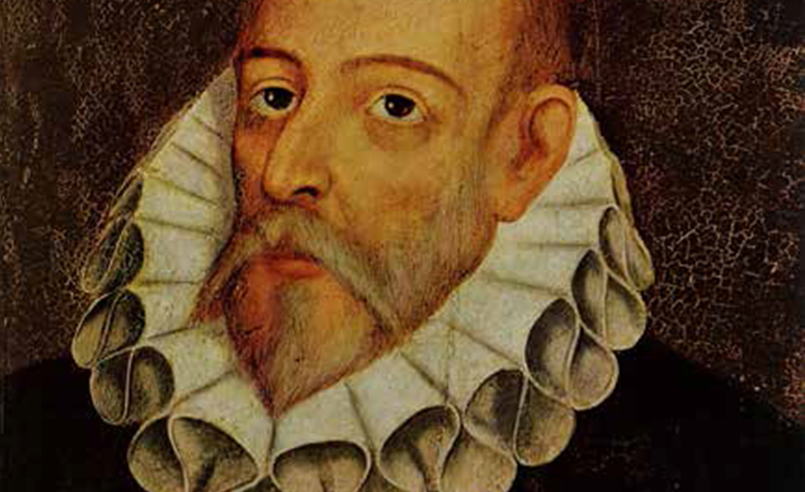
03 – The Ambassador and the route
“The Lord Admiral was wearing a hat with feathers and a band of diamonds, a burgundy cape with braid and orange breeches and amber waistcoat. He is a big man, well proportioned, with white hair and looked to be over seventy. From the Puerta del Campo he went to Santa Cruz passing the houses of the Duke of Infantado, where important ladies were watching from where he advanced to the Corredera, and went past the palace as their Majesties were watching through the stained glass, and the ladies from the windows.”
(Anonymous)
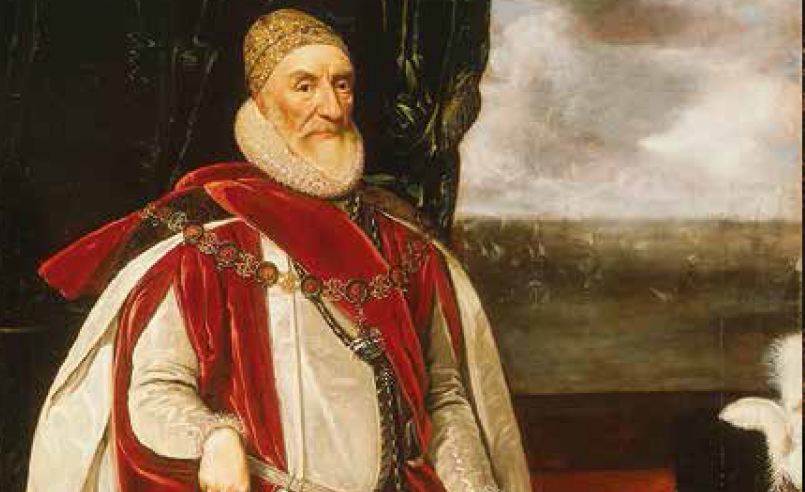
04 – The Tournament and bullfight
“The marketplace is fair, square and spacious, in the middle of which was a new house built of purpose for the King and Queen to sit together in the middle of the gallery […] and after they had sat a while there was fifteen bulls baited with horsemen with spears, and footmen with cloaks and swords, and the bulls were all slain and they did kill three or four men out of hand, and hurt or spoiled five or six more.”
(English anonymous)
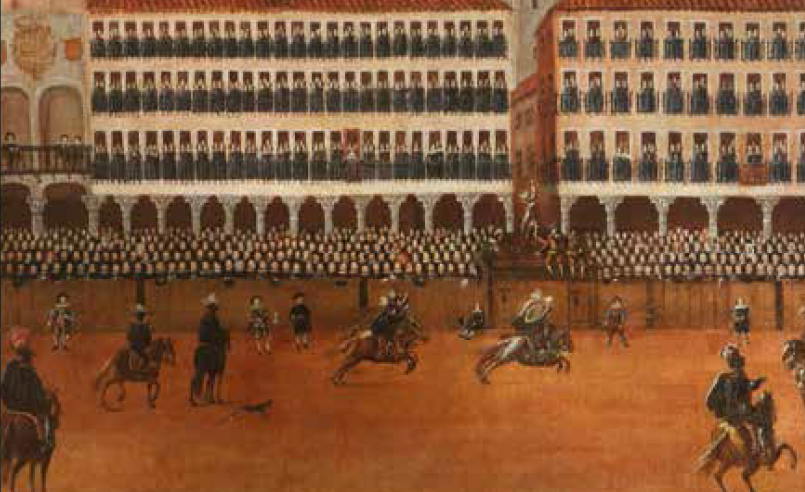
05 – Don Quixote in the Plaza
“And amid this universal rejoicing, so that there would be no entertainment wanting, appeared a Don Quixote, alone and without company, with a big hat on his head and a cloak of coarse cloth and great boots with spurs that were battering the flanks of a poor, dirty old nag […] and Sancho Panza, his squire, ahead. He was wearing spectacles, to show authority, and he had a pointed beard; and because he was on his own and made such a figure some ladies nearby started asking us if this was the ambassador of Portugal or what.”
(Pinheiro)
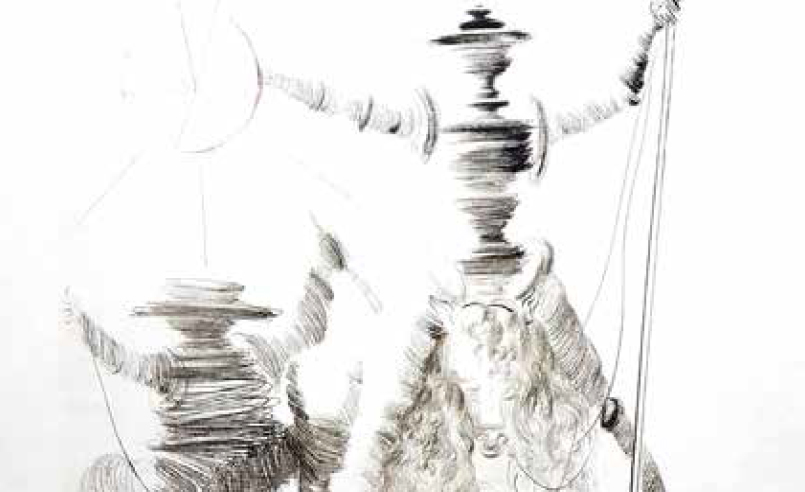
06 – The Court at Valladolid
Moving the court to Valladolid entailed a building programme that included the construction of palaces and noble houses: as Pinheiro put it, ‘enchanted palaces appear where there was once a dump’. The ambassador’s entry into the city was planned meticulously. It was to be a meeting between past enemies and the hosts wanted to demonstrate the grandeur of the Spanish court to their guests. For the city to show all of its splendour the ruta would go through the grandest streets of the city.
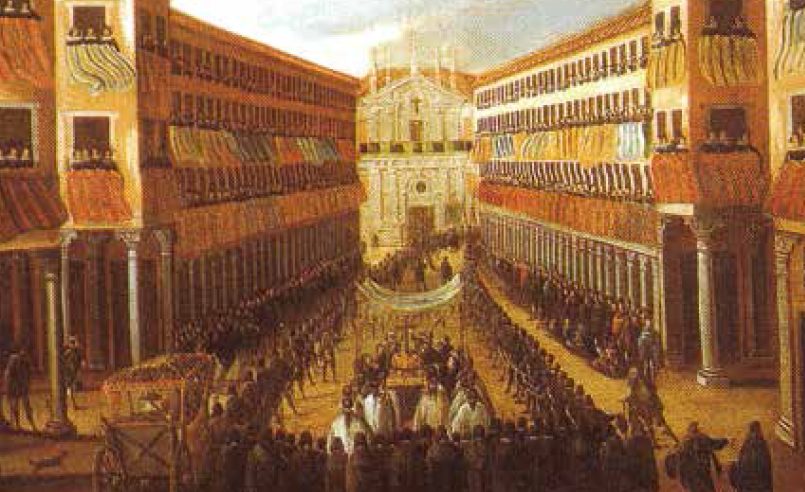
07 – Catholics and protestants
The English embassy with its “six-hundred heretics and heresies”, as Gongora described it, created a big impression among the inhabitants of Valladolid that feared contagion from English Protestantism. A few years before, in 1589, a group of English Catholic exiles had founded a seminary in the city. The English College was excluded from the events of the peace to avoid religious friction. Nevertheless, members of the embassy were invited to enter the churches, some of them newly built, such as the Church of Angustias, completed in 1604.
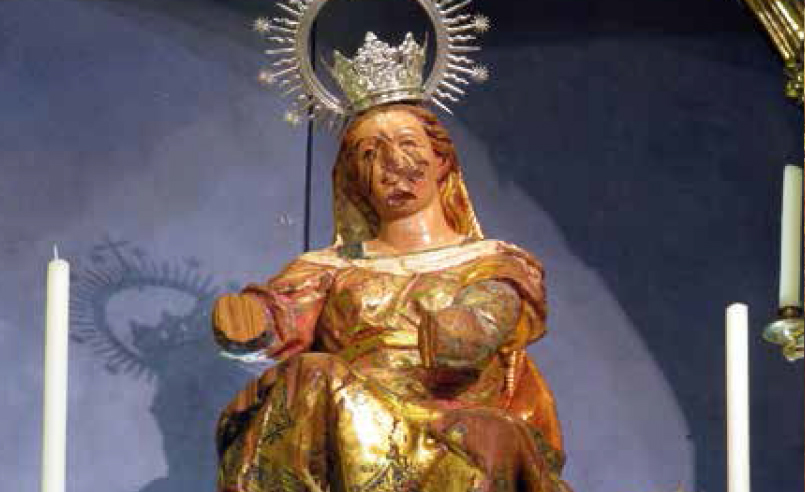
08 – The Holy Spirit Procession
“In the houses of the Count of Ribadavia, near San Pablo, at a big window that overlooks both streets, was placed the Lord Admiral of England, holding his hat in his hand and wearing a short cape full of diamond buttons and a large medallion of the Order of the Garter […]. With him stood Don Blasco de Aragón who, following His Majesty’s orders, was telling him the names of the nobles as they passed, and when His Majesty appeared he made a great show of reverence, while His Majesty, to demonstrate his good will, took off his hat.”
(Spanish anonymous)
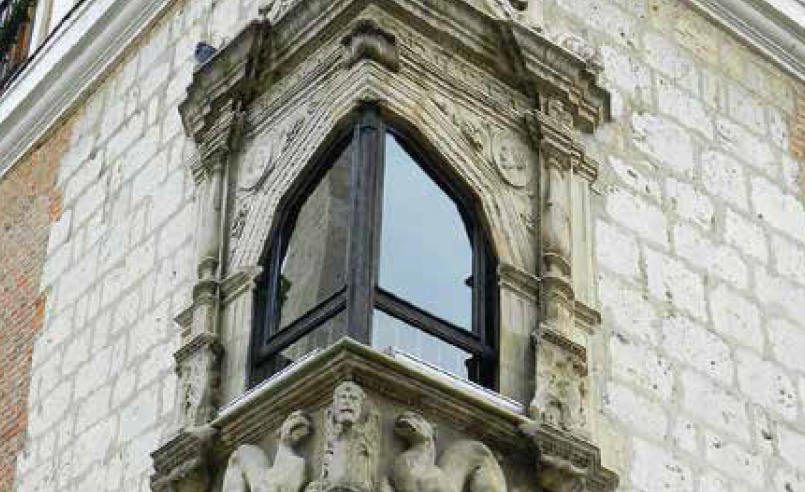
09 – The baptism of the prince
“After dinner there was preparation made for the christening of the Prince, and for that the Court stood from the Church, there was set up of purpose a very large scaffold adjoining to the end of a long gallery and to the Church likewise, the timber whereof was covered with cloth of gold very rich, and the scaffold being high was good means to give sight to all the people […]. The Prince was borne by the Duke of Lerma, in his armes. Then followed the Infanta in a chair made for that purpose and borne by diverse gentlemen of the King’s bed and Privy chamber on their shoulders.”
(Treswell)
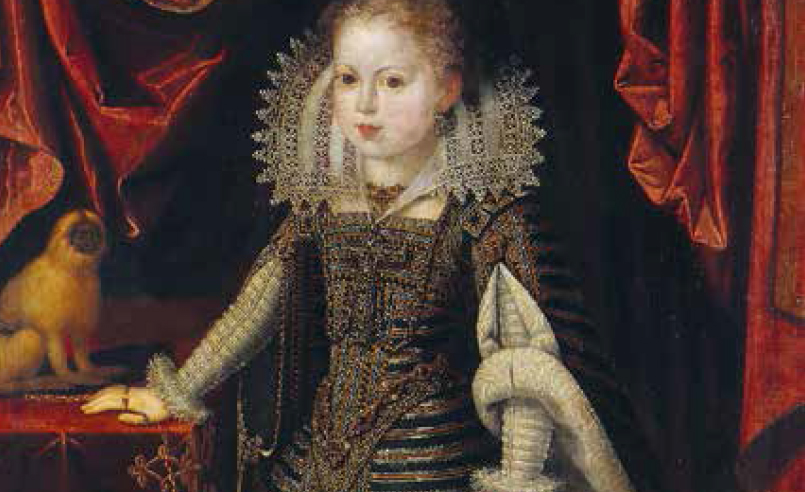
10 – The false door
“The Lord Admiral of England was in the same window of the house of the Count of Ribadavia where he had watched the procession. From that point he could see everyone coming down from the palace and the accompaniment, and to watch the baptism he came out of the false door of the house of the Count of Ribadavia into the College of San Gregorio, from where he passed into San Pablo and climbed into an alcove that is inside the main chapel to admire the greatness of that day.”
(Spanish anonymous)
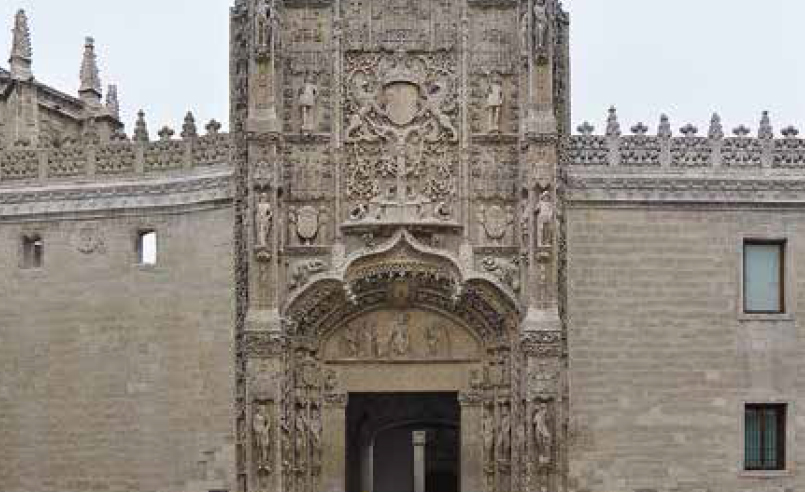
11 – The Count of Gondomar and his library
The organiser of the events in Valladolid was don Diego Sarmiento de Acuña, Conde de Gondomar, who in 1612 would be appointed Ambassador to England, where he remained until 1622. During this time he was a close confidant of James I & VI and, because of this, was feared and hated by protestants who (rightly) suspected he was promoting a marriage alliance between England and Spain. Less controversially, he was a collector of books, and his library in la Casa del Sol became the largest private collection in Spain.
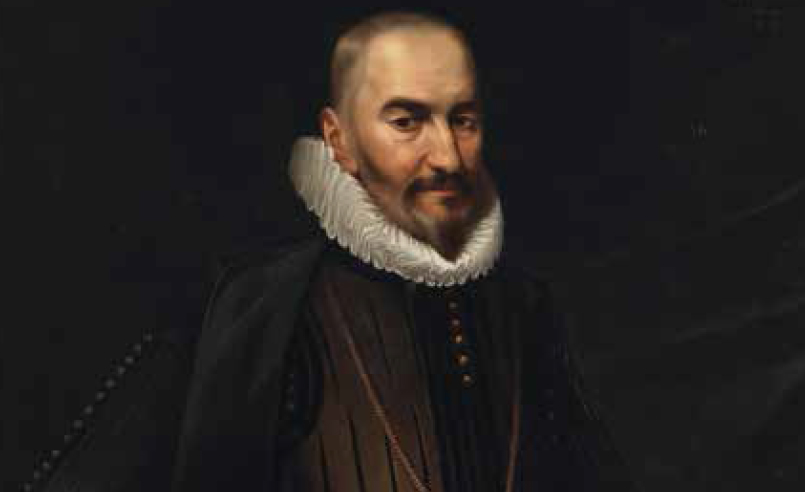
12 – Cervantes and Shakespeare
Some English travellers to Valladolid in the nineteenth century reported that among the books remaining in Gondomar’s old library was a Shakespeare First Folio (1623), the earliest collected works published. Whether or not this was so, we do know that a copy of Don Quixote travelled to London in 1605 in the baggage of one of the members of the English embassy. Soon Cervantes began to influence English writers, including Shakespeare, who co-wrote a lost play, Cardenio (1613), drawing on Don Quixote.
